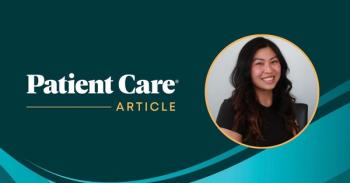
SGLT2 Inhibitors Outperformed Other Oral Antidiabetic Drugs for Patients with T2D and NAFLD, According to New Research
Findings suggest that SGLT2 inhibitors may be the preferred choice for patients with both T2D and NAFLD, reported researchers.
Sodium-glucose cotransporter 2 (SGLT2) inhibitors were associated with a higher likelihood of nonalcoholic fatty liver disease (NAFLD) regression and lower incidence of adverse liver-related outcomes when compared to other oral antidiabetic drugs (OADs), according to results of a large cohort study of patients with NAFLD and
“The results from this study suggest that
According to investigators, while patients with both NAFLD and T2D can benefit from OADs, there is a lack of large-scale clinical data on which OAD class may be more effective for
“This cohort study compared NAFLD regression and other liver-related parameters associated with various OADs in patients with T2D and concomitant NAFLD using nationwide claim data from Korea,” stated first author Heejoon Jang, MD, of the Seoul National University College of Medicine in the Republic of Korea, and colleagues.
Jang and coauthors used the National Health Information Database, which provides population-level data for Korea, to identify more than 80 000 individuals aged ≥19 years with T2D and concomitant NAFLD. Exposures were receiving either SGLT2 inhibitors, dipeptidyl peptidase-4 (DPP-4) inhibitors, or sulfonylureas, each combined with metformin for ≥80% of 90 consecutive days, according to the study.
The main outcomes were NAFLD regression—defined for the purpose of the study as a reduction in fatty-liver index to less than 30 at follow-up from a baseline of over 60—and composite liver-related outcomes, defined as liver-related hospitalization, liver-related mortality, liver transplant, and hepatocellular carcinoma.
FINDINGS
In total, 80 178 patients (mean age, 58.5 years; 53.6% men) were followed for 219 941 person-years, with 4102 participants experiencing NAFLD regression, according to the results.
NAFLD regression. When compared with sulfonylureas, researchers found that SGLT2 inhibitors (adjusted distribution hazard ratio [ASHR] 1.99, 95% CI 1.75-2.27), thiazolidinediones (ASHR 1.70, 95% CI 1.41-2.05), and DPP-4 inhibitors (ASHR 1.45, 95% CI 1.31-1.59) were associated with NAFLD regression. Results also showed that SGLT2 inhibitors were associated with a higher likelihood of NAFLD regression when compared with thiazolidinediones (ASHR 1.40, 95% CI, 1.12-1.75) and DPP-4 inhibitors (ASHR 1.45, 95% CI 1.30-1.62).
Liver-related outcomes. Results showed that when compared with sulfonylureas, only SGLT2 inhibitors (ASHR 0.37, 95% CI 0.17-0.82), not thiazolidinediones (ASHR 0.77, 95% CI 0.36-1.64) or DPP-4 inhibitors (ASHR 0.86, 95% CI 0.65-1.15), were significantly associated with a lower incidence of adverse liver-related outcomes. However, according to investigators, SGLT2 inhibitors made no significant difference in liver-related outcomes when compared with DPP-4 inhibitors (ASHR 0.67, 95% CI 0.33-1.35) or thiazolidinediones (ASHR 0.70, 95% CI 0.27- 1.84).
“These findings should be interpreted with caution due to the observational nature of this study,” concluded Jang et al. “Further research on the clinical outcomes of different classes of OADs on NAFLD would provide a foundation for creating guidance for determining which OADs are preferred.”
They continued: “Furthermore, because patients with T2D at risk of cardiovascular disease are advised to take SGLT2 inhibitors, comprehensive research in this patient group is warranted to confirm the potential advantages of SGLT2 inhibitors for preventing cardiovascular disease over other OADs.”
Source: Jang H, Kim Y, Lee DH, et al.
Newsletter
Enhance your clinical practice with the Patient Care newsletter, offering the latest evidence-based guidelines, diagnostic insights, and treatment strategies for primary care physicians.


















































































































































































































































































